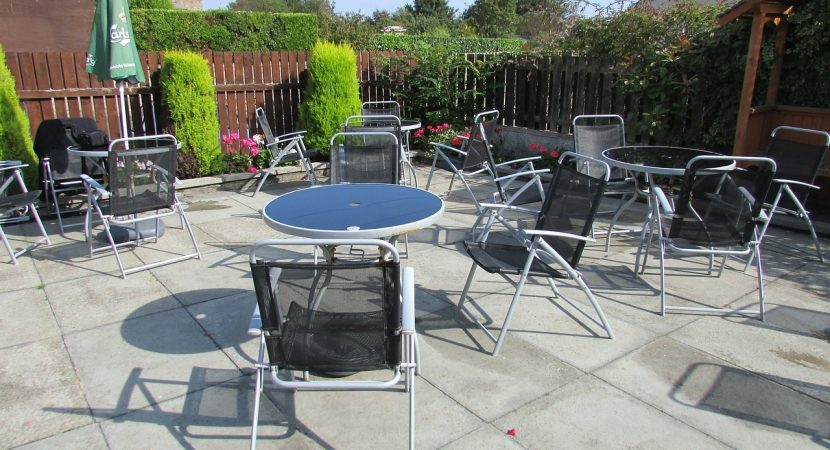Last Updated on
Installing a patio or driveway made of concrete isn’t a small project to take on, but with some patience and proper preparation, it can be done. Many things go into planning to add a concrete slab, be it patio or driveway sized. Here are some items to consider before installing a patio or driveway.
Prepare Your Vision
First things first, draw out a plan, gather all your tools and materials, and do plenty of research. To make sure that your concrete is done correctly and will last, take the time to learn about how to lay it down properly, and about all the different appliqués you can do to concrete. There are numerous colours, moulds, and even things like concrete stenciling to take a basic grey slab to an extraordinary feature.
Plan Out Your Concrete
Begin by figuring out what shape and how large you want your concrete area to be. If it’s a driveway, will it be one or two-car capable? If it’s a patio, do you want any curves to the shape, to potentially work around existing landscape features? Think of a tree – you can’t pour concrete over something like this. After you have a sketched out a plan, it’s time to mark the area. Make sure that you put in blue stakes to mark any utility lines in your project area. Most companies will even come out and mark these for free for you because the expense to repair a busted line is astronomical. You’ll also want to use stakes, tape, and paint to build a form around the area you’re going to pour in. Some people prefer to build the form after digging out the space, but if you are working in a pre-landscaped area, it is better to build the form before digging.
Dig It Out
Something many people forget to consider is where all the dirt that is going to be dug out is going to go. While it can be hauled away, this will be an added expense. A useful idea is to create raised garden boxes for all the soil. It can also be used to level around the yard if you have an odd incline. Speaking of inclines, your end-product will need to have a very slight grade to keep rainwater or snowmelt from draining against your house. Most people recommend just under a 3% grade. If you do not know how to execute this, get some professional help. In addition to the grade, however, you’ve also got to make sure that your pour area is appropriately levelled so that all your liquid concrete doesn’t rush to one spot. While it is possible to find a level large enough, it’s far easier to take a reasonable sized level and attach it to a 2×4 board of the width you need to measure out different sections of your patio or driveway. After this point, you’ll need to invest in some gravel base. Depending on the type of your soil, you may need more or less gravel to help support things. As most patios and driveways will sit against the existing residence, utilise rebar to minimise settling away from the existing structure. Rebar should also be used across your form, on the inside of it.
Pour and Finish
After calculating how much concrete you’ll need, make sure also to acquire the proper size mixer. Wetting down the gravel layer with the hose and having a water source handy will help make sure that the concrete doesn’t cure too quickly while you’re pouring if it’s a larger area. During this process is when you can look into things such as stenciling or other detail options. Stenciling involves a colour hardener that can give concrete the appearance of more rustic pavers, bricks, or stone. Adding dyes to the concrete can add fun pops of colour if you don’t want just a grey slab. Also, different finishes can be applied to make your patio or driveway unique. Last but not least, be sure to let the area cure properly for about a week. Keep pointier objects off it to avoid any damage. Concrete patios and driveways are fun additions to any home or business because they can be designed into truly any shape, size, and colour that you want.
Check here for more information about driveway sealing.


Reply